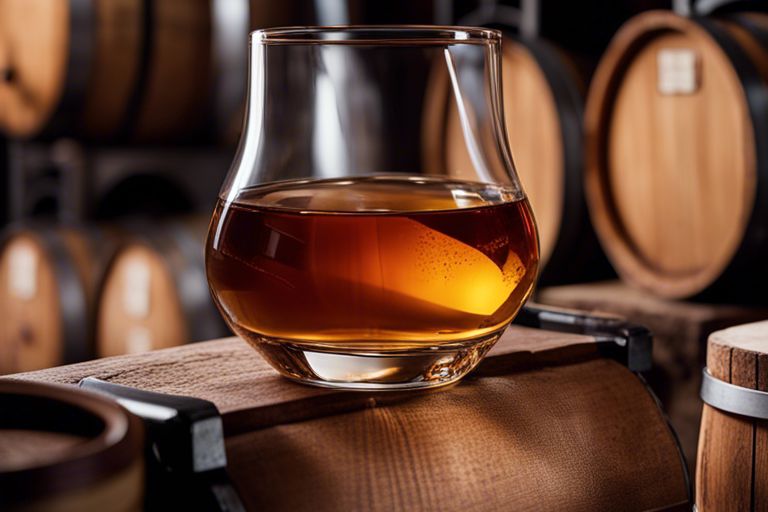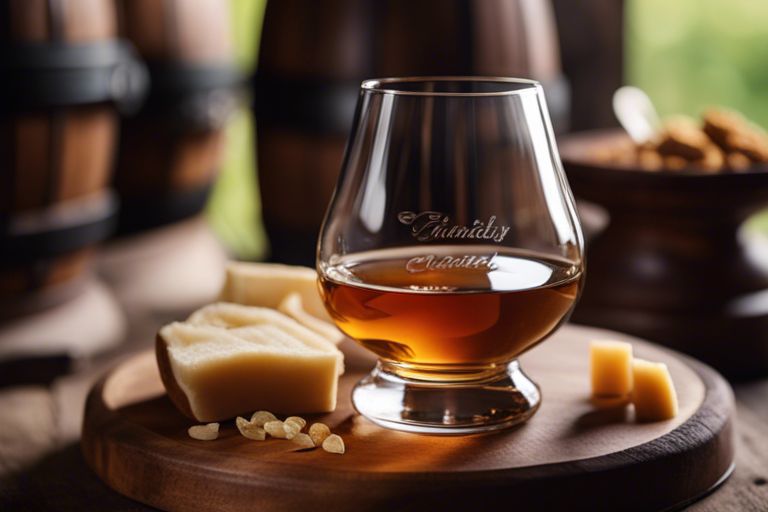Discover the enchanting world of Highland Park single malt whisky, where tradition and craftsmanship come together to create an exceptional spirit that has captivated whisky enthusiasts for centuries. With a rich history dating back to 1798, Highland Park distillery on Orkney Island is renowned for its unique combination of peated and unpeated barley, aged in sherry-seasoned oak casks. Let’s explore into the magic behind the smooth, complex flavors and timeless quality that make Highland Park a standout in the world of Scotch whisky.
Key Takeaways:
- Rich History: Highland Park has a heritage dating back to 1798 and is known for its time-honored traditions in whisky making.
- Distinctive Flavor Profile: This exceptional single malt whisky offers a unique balance of sweetness from sherry casks and smokiness from peat, resulting in a complex and flavorful dram.
- Orkney Terroir: The whisky captures the essence of its Orkney island home through the influence of the maritime climate and local peat, providing a sense of place in each sip.
- Traditional Craftsmanship: Highland Park maintains a traditional production process, including floor maltings and the use of hand-turned malt, reflecting a commitment to quality and craftsmanship.
- Global Acclaim: Highland Park has garnered numerous awards and accolades worldwide, solidifying its reputation as one of the finest single malt whiskies available.
The Origin and History of Highland Park
Little is known about the early history of Highland Park, one of the most respected and distinguished distilleries in Scotland. The journey of Highland Park began in the Orkney Islands, an archipelago off the northeastern coast of Scotland, where the distillery stands as a testament to the island’s rich heritage and tradition of whisky making. The unique location of Highland Park, surrounded by rugged landscapes and steeped in Norse mythology, plays a significant role in shaping the character and flavor of its world-renowned single malt whiskies.
The Founding of the Distillery
Distillery records indicate that Highland Park was officially founded in 1798 by Magnus Eunson, a notorious smuggler and church officer by day, who used his position at the local church to conceal his illicit whisky production at night. Eunson’s clandestine operations eventually evolved into a legal distillery, laying the foundation for what would become Highland Park. The distillery’s longstanding commitment to craftsmanship and tradition can be traced back to its humble beginnings, where quality and integrity were paramount in every drop of whisky produced.
Key Milestones and Notable Events
Notable events in Highland Park’s history include the acquisition of the distillery by James Grant, a whisky merchant from Glasgow, in 1895. Grant’s expertise and passion for whisky helped elevate Highland Park to new heights, expanding its reach and reputation across the globe. Throughout the years, Highland Park has garnered numerous awards and accolades, solidifying its position as a leading producer of exceptional single malt whiskies. Each bottle of Highland Park whisky is a testament to centuries of tradition, innovation, and dedication to excellence.
The Distillation Process
Assuming you are a whisky enthusiast eager to unravel the intricacies of Highland Park single malt, understanding the distillation process is crucial. This process is where the magic truly happens, transforming a simple mash of barley and water into the complex and rich spirit that is Highland Park whisky.
The Art of Malting
Process the barley goes through malting – a crucial step that sets the foundation for the flavor profile of Highland Park whisky. During malting, the barley is soaked in water, allowed to germinate, and then dried using peat smoke, which imparts the distinctive smoky and earthy notes that are characteristic of Highland Park.
The malted barley is then ground into a fine powder known as grist, before being mixed with hot water in a large vessel known as a mash tun. This mixture, known as mash, undergoes enzymatic processes that convert the starches in the barley into fermentable sugars, creating a sugary liquid known as wort.
The Secrets of the Highland Park Still
Still at the heart of the distillation process lies the copper pot stills used at Highland Park distillery. These stills are meticulously designed to capture and concentrate the flavors developed during fermentation, giving Highland Park whisky its distinctive character and complexity.
Each still at Highland Park is carefully shaped and sized to maximize copper contact, which helps remove unwanted sulfur compounds and other impurities while enhancing the fruity, floral, and spicy notes of the spirit. The unique shape of the stills also plays a significant role in capturing and refining the desired flavors, ensuring a consistent and exceptional quality in every batch of Highland Park whisky.
It is this meticulous attention to detail and the skillful art of distillation that sets Highland Park apart, providing whisky enthusiasts with a truly exceptional and unforgettable drinking experience.

Maturation and Flavor Development
Many factors contribute to the rich and complex flavors found in Highland Park Single Malt Whisky. The process of maturation plays a crucial role in the development of its distinctive taste profile. Through the interaction of oak casks and the unique Orkney climate, the whisky undergoes a transformative journey that results in its exceptional quality.
The Role of Oak Casks
With over 220 years of whisky-making expertise, Highland Park understands the importance of selecting the finest oak casks for maturation. These casks, often sourced from American and European oak, provide the whisky with layers of flavor and depth. As the whisky ages in the casks, it absorbs compounds from the wood, such as vanillin and tannins, adding complexity and character to the spirit.
Casks are carefully monitored and selected by the Master Whisky Maker to ensure optimal maturation conditions. The cask type, size, and previous contents all influence the final flavor profile of the whisky, making each expression of Highland Park unique and distinct.
The Unique Orkney Climate Impact
With its remote location off the northern coast of Scotland, the Orkney Islands experience a maritime climate unlike any other whisky-producing region. The temperate climate, with its cool sea mists and constant breezes, plays a significant role in shaping the maturation process of Highland Park Single Malt Whisky. The whisky breathes in the fresh, salty air, imparting subtle coastal notes to its flavor profile.
For instance, the fluctuating temperatures on the islands cause the whisky to expand and contract within the cask, allowing for greater interaction with the oak wood. This dynamic aging process results in a well-balanced whisky with layers of complexity and a harmonious fusion of flavors.
The Highland Park Range
Your journey into the world of Highland Park whiskies begins with an exploration of their diverse range of expressions. From core offerings to limited editions and special releases, each bottle holds its own unique story and flavor profile that showcases the craftsmanship and tradition of this esteemed distillery.
Core Expressions to Know
An important starting point for any whisky enthusiast is to familiarize oneself with the core expressions of Highland Park. The 12, 18, and 25-year-old single malts are the backbone of the distillery’s range, each offering a distinct character that reflects the Orkney Islands’ rugged terroir and maritime influences. The 12-year-old is known for its balance of sweet honey, heather, and rich malt notes, while the 18-year-old exudes complexity with layers of fruit, spice, and subtle smoke. Finally, the 25-year-old is a masterpiece of aging, boasting deep oak, dried fruits, and a lingering finish that mesmerizes the senses.
Limited Editions and Special Releases
Any true connoisseur of Highland Park whiskies knows the thrill of hunting down limited editions and special releases. These bottlings offer a glimpse into the innovative side of the distillery, with unique cask finishes, higher age statements, and one-of-a-kind blends that push the boundaries of traditional whisky making. From the Valhalla Collection to the Orcadian Vintage Series, each release is a testament to Highland Park’s commitment to excellence and creativity.
This range of whiskies allows collectors and enthusiasts to explore deeper into the world of Highland Park, exploring rare and exclusive releases that showcase the distillery’s dedication to quality and innovation. Limited editions offer a glimpse into the artistry and expertise of the master blenders and distillers behind the brand, making each bottle a coveted treasure for those seeking to expand their whisky collection with exceptional expressions.
Appreciating Highland Park
Located in Kirkwall, Orkney, Highland Park distillery has been producing exceptional single malt whisky since 1798. With a rich history and time-honored traditions, Highland Park is renowned for its unique combination of flavors and unparalleled craftsmanship.
Appreciating Highland Park whisky goes beyond just tasting it; it involves understanding the intricate process and dedication that goes into creating each bottle. From the hand-turned floor malt to the use of traditional oak casks for aging, every step in the production contributes to the distinctive character of Highland Park whisky.
Tasting Notes and Pairings
For those looking to truly appreciate Highland Park whisky, taking note of its tasting profile is necessary. The whisky is known for its complex flavors of heather honey, rich fruitcake, and aromatic peat smoke. When paired with dark chocolate or smoked salmon, the flavors of Highland Park whisky are elevated, creating a sensory experience like no other.
How to Enjoy Highland Park Whisky
For aficionados looking to savor Highland Park whisky, it is recommended to enjoy it neat or with a few drops of water to unlock its full range of flavors. The unique balance of sweet notes and subtle smokiness is best appreciated when sipped slowly, allowing each sip to reveal new layers of complexity.
Any addition of ice or mixers may dilute the intricate flavors of Highland Park whisky, so it is advised to avoid such practices to fully appreciate the whisky’s true essence. By taking the time to savor each sip, enthusiasts can fully immerse themselves in the magic of Highland Park single malt whisky.
Final Words
Considering all points, exploring Highland Park single malt whisky has been a journey into the heart of craftsmanship and tradition. From its unique location and history to the meticulous craftsmanship that goes into every bottle, Highland Park stands out as an exceptional whisky that continues to captivate whisky enthusiasts around the world. Its distinct flavor profile, influenced by its Orkney roots, truly sets it apart on the shelves of whisky connoisseurs. By understanding the magic behind Highland Park, we gain a deeper appreciation for the artistry and dedication that goes into creating this exceptional single malt whisky.
FAQ
Q: What makes Highland Park single malt whisky exceptional?
A: Highland Park single malt whisky is considered exceptional due to its unique combination of flavors and aromas, stemming from the traditional use of Orkney peat in the malting process and maturation in sherry-seasoned oak casks.
Q: What sets Highland Park apart from other whiskies?
A: Highland Park stands out from other whiskies due to its commitment to traditional craftsmanship, with every step of the production process, from malting to maturation, carried out on-site at the distillery in Orkney, Scotland.
Q: How should one best enjoy Highland Park single malt whisky?
A: To fully appreciate the magic behind Highland Park single malt whisky, it is recommended to enjoy it neat or with a splash of water to unlock the complex flavors and aromas. Additionally, pairing it with dark chocolate or smoked meats can enhance the tasting experience.
